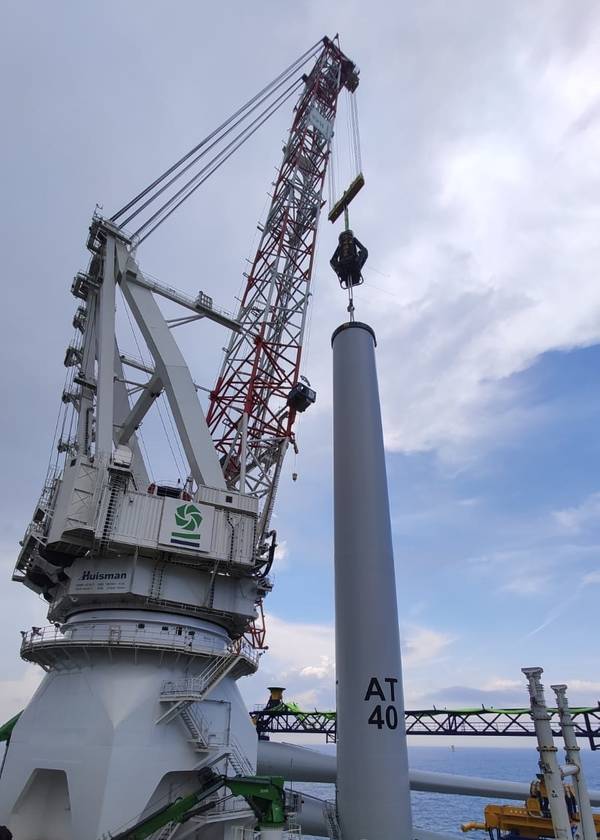
Dutch heave compensation specialist Seaqualize executed the world’s first offshore transfer lifts of wind turbine components from a heaving supply vessel.
The company’s newly developed offshore lifting device, the Heave Chief 1100, is being deployed by DEME Offshore US to instal the first turbines at Vineyard Wind together with the feeder barge solution developed by DEME Offshore US, with partners Barge Master, Foss Maritime and Seaqualize, and the operators and equipment from GE Renewables.
The Seaqualize technology will ensure that the Halliade X 13 MW turbines can be installed year-round.
Seaqualize is responsible for executing the fast lift from the barge to the installation vessel, while compensating for heave motions. The company says: “Never before have such delicate but heavy lifts been done, under safe compensation, and with full active heave control. It now needs to be done hundreds of times more in the upcoming months, to make sure the team can keep installing wind turbines all year round, even in adverse weather conditions.”
Seaqualize develops and operates inline Balanced Heave Compensators, a next generation lifting tool specifically designed for heavy lift, in-air active load control. The company’s newest HC1100, is capable of compensating and fast lifting the 1,100mt required to balance turbine components for 15MW turbines. Normally such lifts would require extremely flat seas, as re-hits with the heaving barge deck, or shock loads to the lifting crane would cause serious damage.
Over the first set of lifts made so far, the HC1100 has shown that lifting can continue while the machine continues to fully compensate heave motions up to 3.5m, and the first lifts showed it can fast-lift full loads at speeds of over 70cm/s (42 m/min). For the tall tower sections of up to 70m high, two separate systems by Barge Master further compensate pitch and roll motions.
Managing Director Gjalt Lindeboom says: “Some will say: ’Haven’t we done floating lifts for years already in the oil and gas industry? The answer is ‘yes’, but not at this scale, frequency and with such delicate, standard components. In oil and gas, it is not uncommon to wait several days or even weeks to execute one single safe floating transfer lift of, for example, a heavy platform top side, or vessel module. It only has to be done once and that is the project. Furthermore, the component is usually engineered and fabricated to withstand any undesired transport, lifting or installation loads, simply by adding protective steel.”
Both are not possible in the extremely cost-driven and competitive offshore wind sector, he says. For example: the Vineyard Wind project requires more than 800 lifts, with loads ranging anywhere between 10 and 1,000mt, all in the quickest succession possible. Windfarms already planned for the upcoming years are sometimes even almost twice as large.



